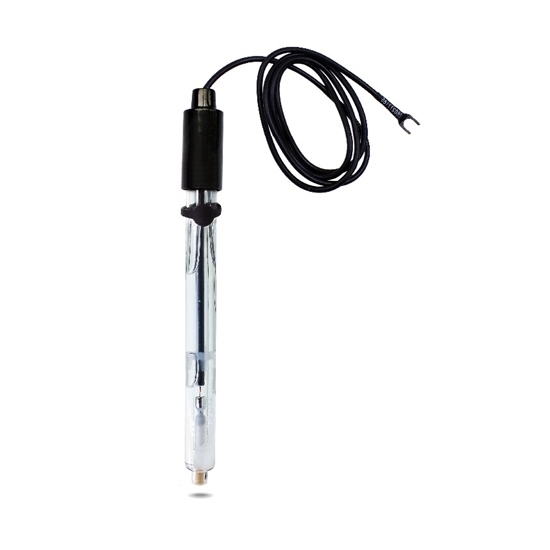
Why buy from us?
Lorem Ipsum is simply dummy text of the printing and typesetting industry.
Ask a Question About This Product
- Stock: In Stock
- Model: KOLAUT-RE-6802
- Weight: 1.00
- SKU: KOLAUT-RE-6802
Available Options
Calomel (Hg/ Hg2Cl2) reference electrodes have a stable and well-defined potential, making them suitable for precise measurements. They exhibit low impedance and are insensitive to light, making them advantageous for various electrochemical applications.
Specification
| Model | KOLAUT-6802 |
| Electrode Type | Calomel (Hg/ Hg2Cl2) Reference Electrode |
| Reference Type | Calomel Single Salt Bridge Type |
| Salt Bridge Material | Ceramic Sand Core |
| Filling Liquid | 0.1mol/L KCl |
| Shell Material | Glass |
| Temperature Range | 5℃~55℃ |
| Dimension | φ12*120mm |
| Connector | U-Shaped Fork Piece |
Dimension
Application
Tips: What are the types of reference electrodes?
Reference electrodes are crucial in electrochemical measurements, providing a stable potential against which the working electrode potential is measured. Common types include the Standard Hydrogen Electrode (SHE), offering a precise potential but impractical due to handling difficulties. The Ag/AgCl electrode is widely used in aqueous solutions, providing stability and ease of use. Another variant is the saturated calomel electrode (SCE), featuring a mercury-based redox system. Non-aqueous systems often employ the silver/silver ion electrode. Pseudo-reference electrodes, like the ferrocene/ferrocenium (Fc/Fc+) couple, offer advantages in organic solvents. Solid-state reference electrodes, such as those based on ion-conductive ceramics, present alternatives with enhanced durability. Choosing the appropriate reference electrode depends on the specific electrochemical system, considering factors like solvent, potential range, and experimental conditions.


















